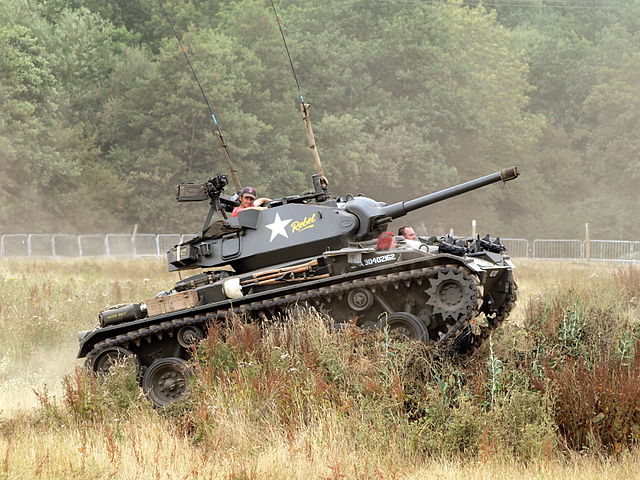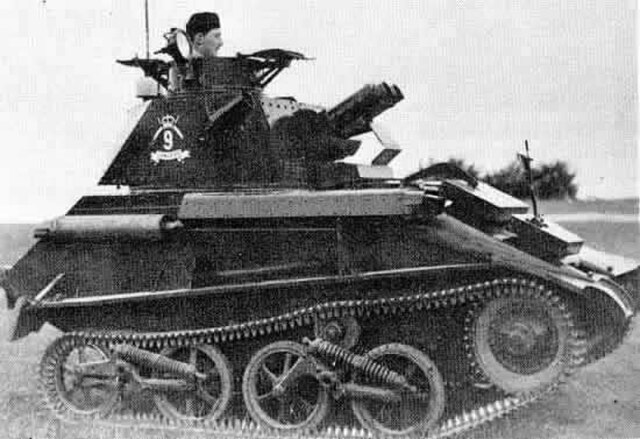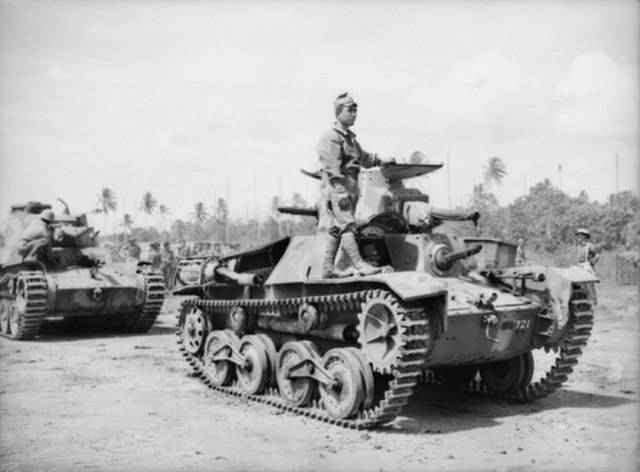The Vickers 6-ton tank or Vickers Mark E, also known as the "Six-tonner", was a British light tank designed in 1928 in a private project at Vickers. Though not adopted by the British Army, it was picked up by several other armed forces, and licensed by the Soviet Union as the T-26. It was also the direct predecessor of the Polish 7TP tank.
A Finnish Vickers 6-ton rearmed with the Russian 20K gun at the Manege Military Museum, Helsinki, Finland (2006)
Polish Vickers E Type A (early version)
Polish Vickers E Type A (late version)
Vickers 6-ton tank in Parola Tank Museum, Finland. Armed with a Swedish 37 mm Bofors anti-tank gun.
A light tank is a tank variant initially designed for rapid movements in and out of combat, to outmaneuver heavier tanks. It is smaller in size with thinner armor and a less powerful main gun, tailored for better tactical mobility and ease of transport and logistics. They are primarily employed in the screening, armored reconnaissance, skirmishing, artillery observation, and supplementing landing operations in a fire support role of expeditionary forces where larger, heavier tanks are unavailable or have difficulties operating safely or efficiently.
The M24 Chaffee, an American light tank used during the later part of World War II, and several subsequent conflicts
US Army operating Renault FT tanks
British light tank Mk V
Type 95 Ha-Go tanks in New Britain following the Japanese surrender








